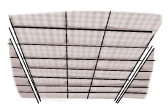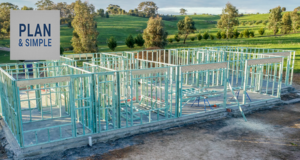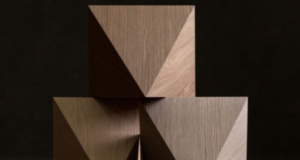
Foil-type insulation is reflective insulation, designed to prevent radiated heat from entering your home. This type of insulation is most often used in warmer climates to keep heat out of a house.

What is foil insulation or reflective insulation?
Foil insulation is also known as reflective insulation, or referred to as a house’s radiant barrier or reflective barrier. Foil insulation is insulation that has a thin layer of reflective foil on one or both sides, and is designed to reflect heat.
Foil insulation can take any one of a number forms. Most commonly, it’s supplied as sheets used for sarking, laminated onto plasterboard or expanded polystyrene (XPS), or supplied as a backing on concertina style batts or multi-celled (i.e. rock wool or glass wool) batts. Foil insulation products are collectively referred to as reflective foil laminates (RFLs).
What is foil insulation used for?
Foil insulation is ideal for hot weather, and is mostly used in roofs and walls. It’s designed to reflect heat radiation, but also comes combined with bulk insulation like glass wool or rock wool batts to create a composite type insulation, which insulates against heat transfer through convection and conduction too.
Reflective insulation can more or less be used on its own up north in the tropics. The absence of bulk insulation lets heat to escape out of homes faster. In areas of Australia where the temperature is hot in summer but cool in winter, a mixture of both bulk and reflective insulation ensures that your home reflects heat in summer and contains it in winter.
Provided that it’s installed properly, foil insulation is extremely effective. Some foil type insulations are capable of reflecting up to 97% of radiant heat, which can make a huge difference to the temperature inside a home.
How is reflective foil insulation installed?
Wherever it’s installed, foil insulation needs to incorporate an air gap of at least 25mm below the reflective surface to work effectively. The reflective surface of the RFL should face downwards.
In steel and aluminium roofs, foil insulation or sarking serves a dual purpose – it also conveniently acts as a condensation barrier. Because steel roofs themselves provide very little in the way of soundproofing, foil faced roofing blankets which also incorporate a layer of glass wool or rock wool are often used. The layer of glass wool or rock wool does a great deal to reduce the amount of noise that comes in from the outside world. In this case, it’s a thermal insulator, an acoustic insulator and a condensation membrane all at the same time.
If it’s not installed when the roof’s being made, reflective insulation can be retrofitted in most kinds of roofs. Steel roofs can simply be removed to allow it to be installed and then replaced without any damage. Concrete and ceramic tiles can have reflective foil sarking installed under the tiles either during installation, or when a roof is retiled. Foil backed batts can also be installed between roof trusses or rafters if this isn’t an option.
Special considerations
It’s very important to remember that foil conducts electricity. Many people have tragically died installing insulation when live electrical wiring has come into contact with foil. This is one of many good reasons to leave the installation of insulation to people who know what they’re doing. While the job itself mightn’t seem all that complicated, how safe it is depends as much on how careful the electrician who installed your wiring was as it does on how careful the insulation installer is.
Another thing to be particularly mindful of is dust particles on the reflective surface of your foil insulation. Dust can dramatically affect how well it performs, and for this reason it’s very important to ensure that it’s always installed with reflective surfaces facing downwards, or vertical.





